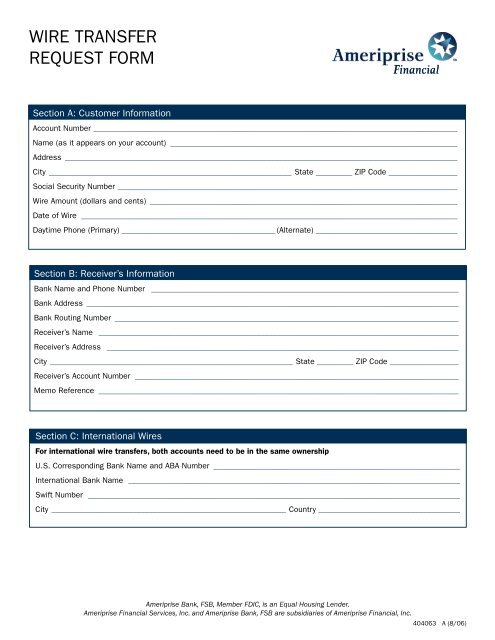

Whether you’re sending or receiving a bank wire, the bank or credit union will generally charge fees for their services. Assuming payment information could result in a lost or tampered payment.

To find this information, your best bet is to directly contact your intended recipient. The account number for the recipient that they wish to deposit the funds.The name and address of their bank or credit union.But, as a general rule, all you have to do is get some information from your intended recipient. Spending on which bank or financial institution you’re working with, the process for sending a domestic wire transfer may be a bit different.Know who you’re sending to and why, input the correct information on your side, and you shouldn’t have a problem. Ultimately, the best protection for your wire transfer is yourself. You can make sure the numbers are right, but human error on the side of the bank is often unavoidable. This could occur on the banks side, and yours as well.

Popular examples of this are fake charities, calls claiming to come from relatives, and unreputable online retailers.Īlso, human error can jeopardize wire transfers, as incorrectly inputting banking information can route your money to the wrong place. If the payment recipient isn’t unequivocally known to you, there is a possibility that you’re being scammed or taken advantage of. The danger with sending wire transfers often lies in transferring money to an unknown party. How long does it take?Ĭonsidering each financial institution is secure, and both the sender and receiver of each wire transfer must be identifiable and have a bank account, wire transfers are inherently protected. Transferring funds between two banks that don’t have a direct relationship requires the use of one or more intermediary banks that share commercial accounts with both the sender’s bank and receiver’s bank. SWIFT messages are usually received within minutes, and the actual transfer of the funds is even faster.Īs a result, banks with direct relationships process transfers faster, cheaper and safer than banks without, however both are still technically doable. Transferring funds on the SWIFT network is much faster when dealing with banks that have a direct relationship. Once the receiver is notified, the funds can be transferred over to the receiver’s account. If the sender’s bank has a commercial account with the receiver’s bank, and vice versa, the sender’s bank can relay a message on the SWIFT network to the receiver’s bank about the transfer. The speed and reliability of international bank transfers sent using the SWIFT depends entirely on the relation between the sender’s bank and receiver’s bank.

The sender’s bank and receiver’s bank are connected through the SWIFT number via BIC and IBAN numbers, which facilitates the transfer of funds. It does not hold funds or perform transactions. However, the SWIFT network is only a messaging system. The majority of interbank wire transfers rely on this network to process the movement of funds. SWIFT (Society for Worldwide Interbank Financial Telecommunication) is a messaging network that enables banks and financial institutions to send money transfers in a fast and reliable manner. The two main types of bank wire transfers are international and domestic.


 0 kommentar(er)
0 kommentar(er)
